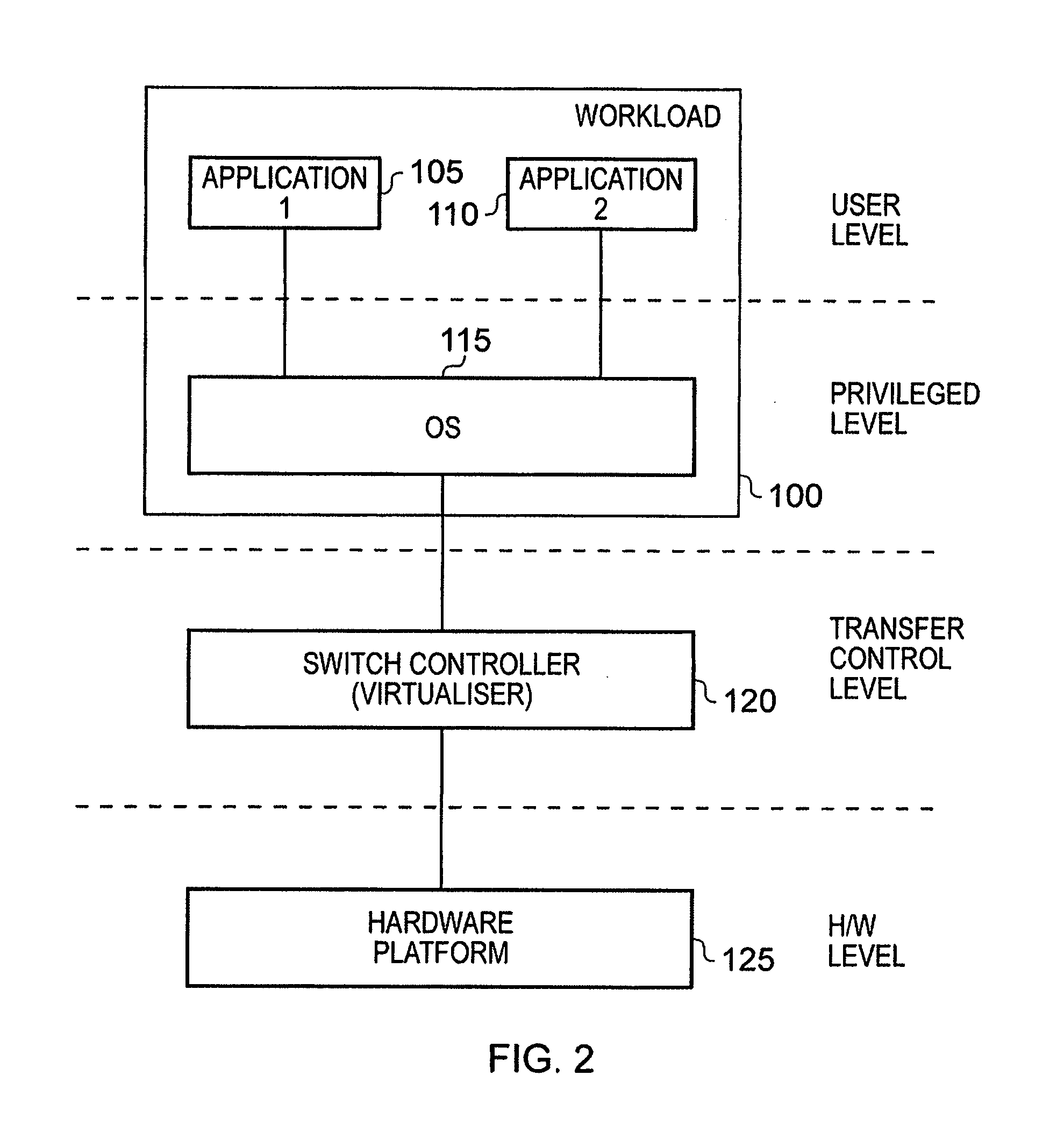Data processing apparatus and method for switching a workload between first and second processing circuitry
a data processing apparatus and workload technology, applied in memory adressing/allocation/relocation, multi-programming arrangements, high-level techniques, etc., can solve the problems of a single processor taking on tasks with such divergent performance requirements, a significant burden on the operating system, and the general insufficient technique to allow a single processor to take on such tasks. , the effect of reducing the workload
- Summary
- Abstract
- Description
- Claims
- Application Information
AI Technical Summary
Benefits of technology
Problems solved by technology
Method used
Image
Examples
Embodiment Construction
[0048]FIG. 1 is a block diagram schematically illustrating a data processing system in accordance with one embodiment. As shown in FIG. 1, the system contains two architecturally compatible processing circuit instances (the processing circuitry 010 and the processing circuitry 150), but with those different processing circuit instances having different micro-architectures. In particular, the processing circuitry 10 is arranged to operate with higher performance than the processing circuitry 50, but with the trade-off that the processing circuitry 10 will be less energy efficient than the processing circuitry 50. Examples of micro-architectural differences will be described in more detail below with reference to FIGS. 8A and 8B.
[0049]Each processing circuit may include a single processing unit (also referred to herein as a processor core), or alternatively at least one of the processing circuit instances may itself comprise a cluster of processing units with the same micro-architectu...
PUM
 Login to View More
Login to View More Abstract
Description
Claims
Application Information
 Login to View More
Login to View More - R&D
- Intellectual Property
- Life Sciences
- Materials
- Tech Scout
- Unparalleled Data Quality
- Higher Quality Content
- 60% Fewer Hallucinations
Browse by: Latest US Patents, China's latest patents, Technical Efficacy Thesaurus, Application Domain, Technology Topic, Popular Technical Reports.
© 2025 PatSnap. All rights reserved.Legal|Privacy policy|Modern Slavery Act Transparency Statement|Sitemap|About US| Contact US: help@patsnap.com



